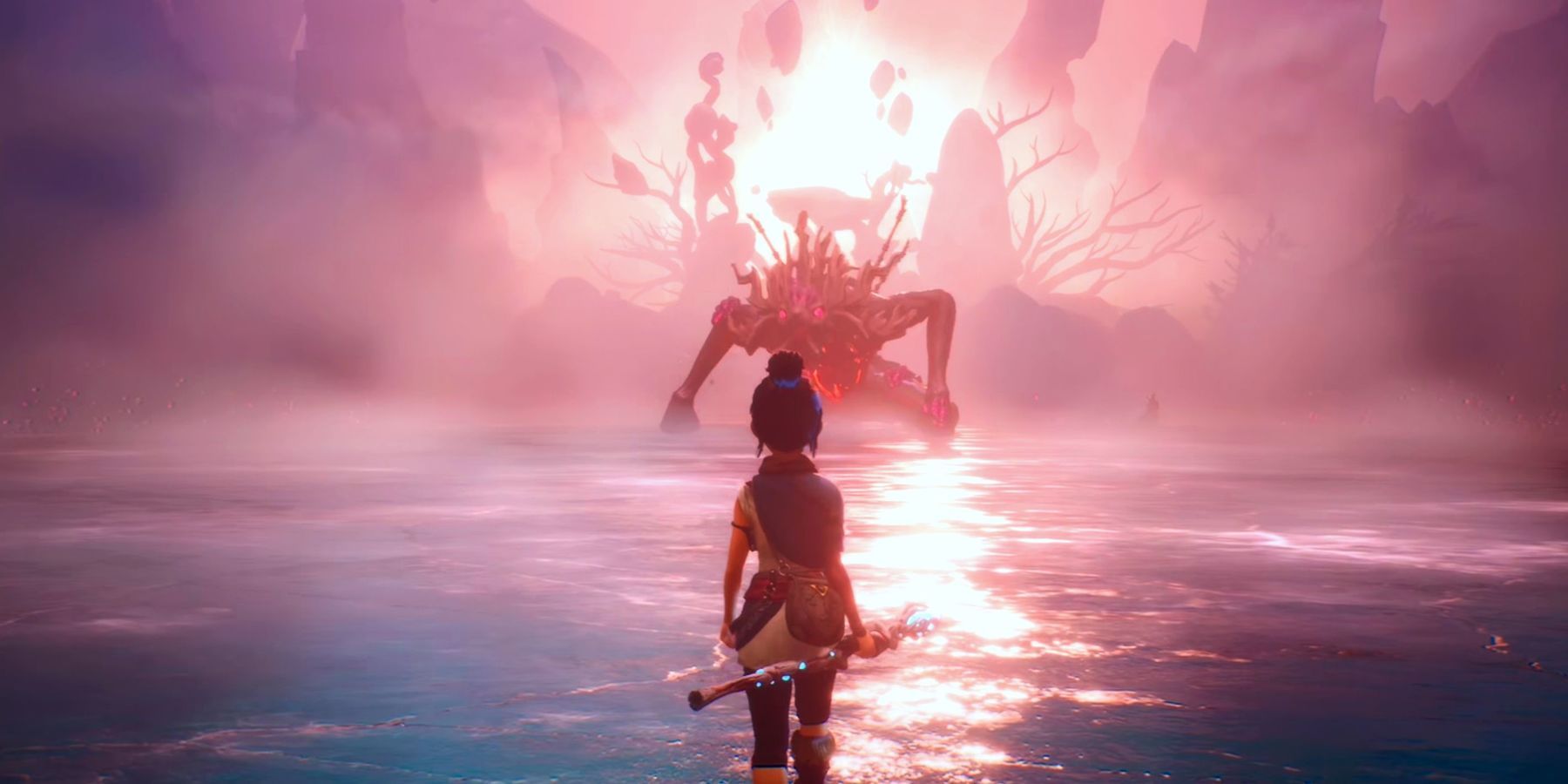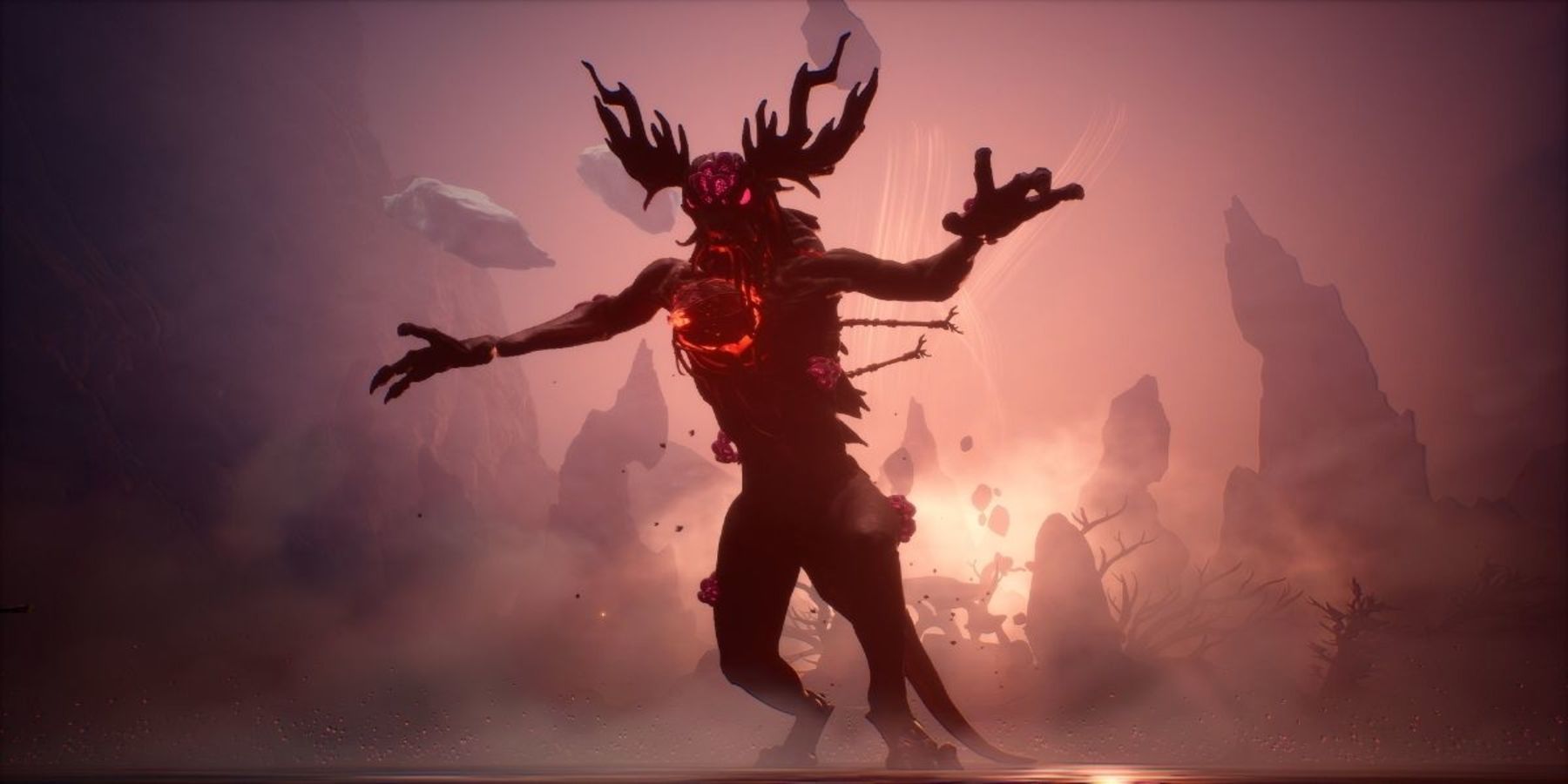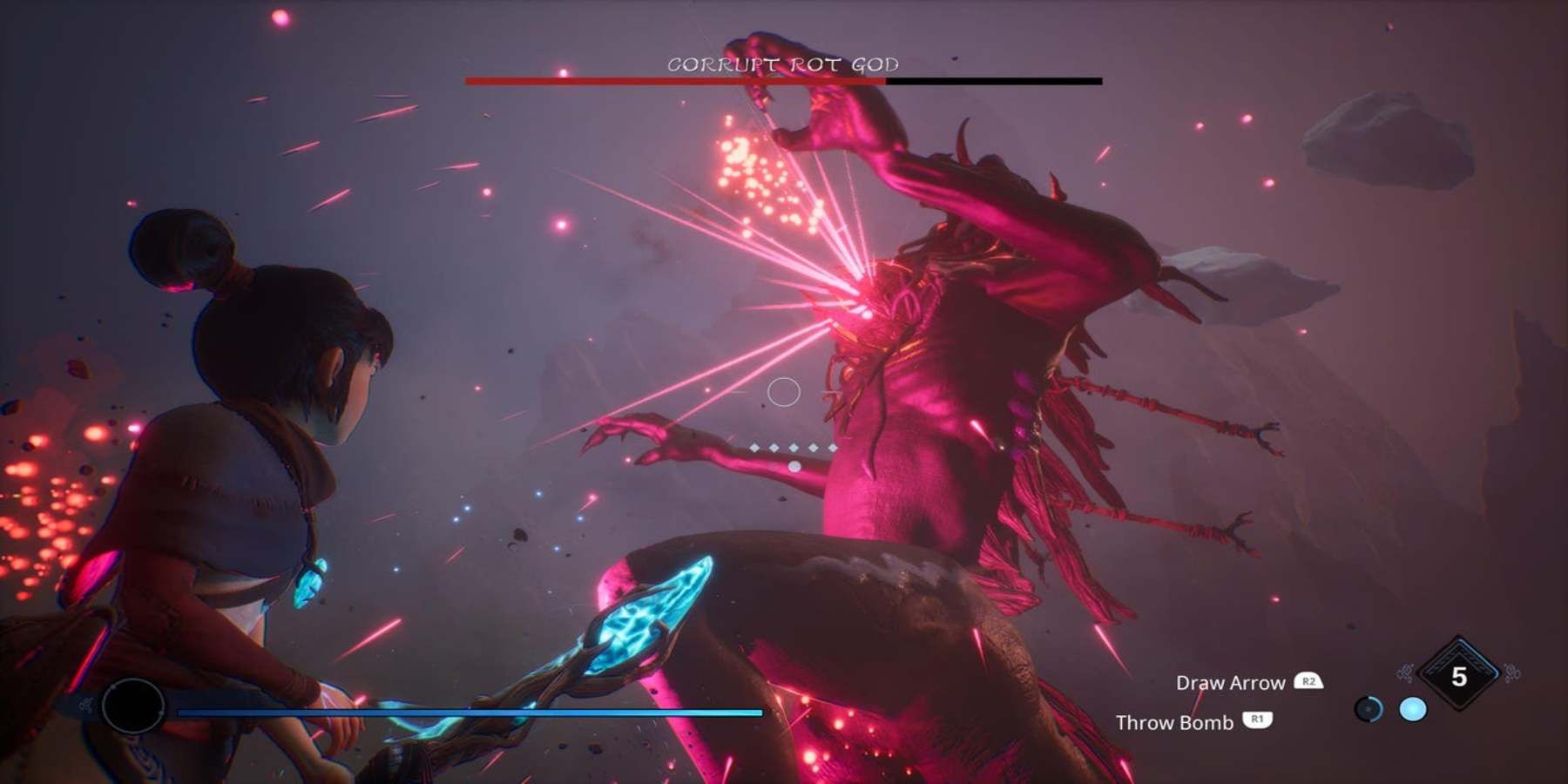It is hard to believe that Kena: Bridge of Spirits is Ember Lab’s debut game. The visuals are breathtaking, the combat feels great, and the boss battles are unique and varied. Exploration is a ton of fun, too, as it is hard not to get excited when finding a Rot or a stylish new hat for the adorable creatures to wear. With only some low frame rate cutscenes and stiff climbing animations serving as giveaways, it is easy to be fooled into thinking that Kena: Bridge of Spirits is a big budget, AAA game.
Kena: Bridge of Spirits has been praised by fans and critics alike for how much it resembles old school games like Zelda, as it truly feels like something from another era. For the most part, this wave of nostalgia is great, as it feels like a modernized version of the classics that many gamers were raised on. However, Kena: Bridge of Spirits’ old school style does become a detriment in its final moments. The last boss fight drops the difficult-but-fair approach seen in the game’s other encounters, becoming a drawn-out fight that is memorable for all the wrong reasons.
The Many Issues With Kena’s Corrupt Rot God Boss Battle
After Kena defeats Toshi in a well-crafted boss encounter, players are surprised by the “true” final boss of Kena. The Corrupted Rot God is massive, boasting an intimidating design. Before long, players should catch on to the mechanics of the fight, which sees them destroying purple weak points on the Rot God’s limbs. While there is a good variety of attacks to dodge, the first phase is certainly doable, and before long players will be moving onto the next part of the battle.
However, instead of continuing to fight the Rot God, Kena: Bridge of Spirits players will be teleported into a gauntlet area where they have to take on waves of enemies. While this would normally be challenging, the fact that Toshi had taken Kena’s Rot prior to this battle makes it far harder. Special attacks are off limits, with players limited to their bow, staff, and dash. Considering that players need to take on a large Wooden Knight that served as a boss fight earlier in the game, with no abilities and no healing options, this is a bit much. Even on Kena's lower difficulties, players will likely die here at least once, revealing the fatal flaw of the Rot God’s design.
Much like in older games, there are no checkpoints to be seen despite the length of the encounter. Kena: Bridge of Spirits players need to get through an entire ten-minute boss fight, which is undoubtedly the most difficult in the game, without dying once. If players do survive the enemy gauntlet, they need to take out more weak points on the god itself, and they will then be thrust into a platforming section. This would be the perfect place for a checkpoint, but one does not come. Instead, players are thrust back into the boss arena for a final phase that works differently than the others - with no warning given of the coming change.
Make no mistake, difficulty in video games is a great thing. Video games like Dark Souls have proven this, with multi-phase boss battles being fair and fun. However, these encounters do not last 10 minutes, with many Souls bosses able to be beaten very quickly with enough practice. In Kena: Bridge of Spirits, the Rot God encounter will always be overly long, and it will always feel unfair when players are sent back to the very beginning. While the concept of splitting Kena from her Rot allies is great from a story perspective, the length of the fight makes this poorly timed. Reclaiming the Rot through the enemy gauntlet and platforming sections should feel like a triumphant moment, but with players having their rot actions drained instantly once they hop back into the arena, these moments feel pointless.
This all becomes more frustrating due to the Rot God’s grab attack, which takes nearly all of Kena’s health. This grab looks just like another move, which means it is incredibly hard to predict and dodge, leading to frustration if players are hit by it. Kena: Bridge of Spirts’ Master difficulty adds to the problems with the boss’s design, as Kena does less damage and enemies are more aggressive. She also takes more damage, meaning that the enemy gauntlet that comes after the first phase is brutally challenging. Further, on Master, players need to perfect parry an enemy to charge their Rot attacks in the final phase instead of just defeating foes like on the other difficulties. This is something that most will not know to do on their first try - guaranteeing death and yet another replay.
What Kena’s Corrupt Rot God Boss Battle Should Teach Ember Lab
For all its flaws, there is a good boss fight underneath this unfair Rot God battle. As such, the fight and the many issues that players are having with it should be a good lesson for Ember Lab to keep in mind when designing its next game. The most obvious of these lessons is that, if a fight is going to be as long as the Rot God, checkpoints should be mandatory. After all, putting players through a grueling battle like this one is not challenging, but unfair. One way to fix this Kena: Bridge of Spirits problem is to add a checkpoint once players complete the enemy gauntlet, and another after the platforming area. This way, they are rewarded for getting through one full section of the battle.
Another option would be to remove these sections entirely. Kena could instead collect her Rot after each time she knocks down the Corrupt Rot God, with some coming back to her after each phase. Multi-phase battles make sense and can work well, but players should get through those phases in quick succession. Sekiro: Shadows Die Twice’s Isshin the Sword Saint is a perfect example of this. Players need to complete multiple phases that test their mastery of every mechanic, but these phases come in quick succession. They are not broken up by long fights with small enemies, with players focused entirely on the boss itself. If each Rot God phase happened back-to-back like Isshin, the fight would be quicker and fairer.
Other small improvements could be made to the encounter as well. For starters, refining the Rot God grab attack to make it more obvious would be a big plus. Another wise change would see the brief run removed from the start of the fight. While this is only about fifteen seconds long, the time wasted on these jogs will start to add up since many players will have to retry the fight several times. Yet another fix would see at least one Rot action carrying over after players pick up a group of Rot from the gauntlets, as not being able to heal instantly once getting back to the main fight can be annoying. Lastly, a better indicator that players must remove spears in the final phase would help, which could be as simple as zooming in on them via a brief cutscene.
There is plenty to appreciate about Kena Bridge of Spirits’ acting, music, and its core gameplay mechanics. Ember Lab crafted a truly spectacular game, especially since Kena is the animation studio’s first foray in this medium. Still, no game is perfect, and Kena’s Corrupt Rot God boss is an example of that. Standing out due to the quality of the other boss battles, and an outdated approach to multi-phase encounters, it is a clear example of what not to do going forward. Some things are better left in the past, and 10-minute battles with no checkpoints is certainly one of them. Whatever Ember Lab makes next, it needs to ensure that its last boss is just as well-crafted as the rest of the game.
Kena: Bridge of Spirits is available now on PC, PS4, and PS5.



